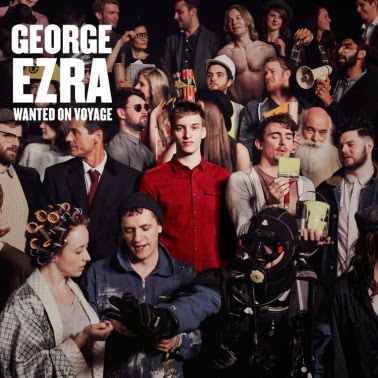George Ezra
I have chosen to analyse the unique album cover for the artist George Ezra's debut album, "Wanted on Voyage".Conventions
Music videos are notorious for there free form and lack of rules, meaning they are hard to compartmentalise into genres because they are so artistically liberating. On the other hand, digipaks appear to have common features that unite them within a genre.From my research I have concluded that there are two main formulaic groups of album cover types:
- A close-up of the artist which places the focus entirely on them as opposed to anything else in the frame. These are often used when an artist has a striking or iconic image, because you see the face and are interested before you read the name of the artist/album.
- Or they tend to show a random scene which usually holds a deeper message, that does not feature the artist at all. This group also contains album covers which feature bands, as they aren't usually shown in meat shots such as the above examples, but arranged in an interesting way.
If an artist has established themselves and does not need to show their appearance in order to be recognised they often change to a more meaningful, artistic album cover. For example, Pink Floyd's dark side of the moon is arguably the most well known album cover ever made, yet The Beatle's Abbey Road cover is equally iconic despite it's lesser subliminal meaning.
George Ezra's album cover smashes both of these conventions and shows him in a medium long shot surrounded by other people. In this way it is unique as it is not a meat shot, and it shows many other (possibly distracting) people.
Media Language
- Ezra is seen in a red shirt which singles him out from the rest of the crowd as no one else is wearing red. In fact, he is the only person wearing clothes of any vibrant colour, the rest are all dressed in greys, blacks and white. Once more this helps him stand out against the crowd.
- Make-up has been used to make his skin lighter, which combined with the spot lighting on his face helps to separate him out and highlight him against the dull tone/colour palette of the crowd. A subtle effect, but one that means we see him quickly and recognise him.
- Often the rule of thirds is used to create a visually pleasing aesthetic that stops the viewers eye from drifting off to the sides of the image, as it helps to control the reading path. In this image Ezra is positioned centrally in the image, which is highly unusual, however given his surroundings it is almost necessary to separate him from the rest of the people and position him as being important.
- Ezra's acknowledgment of the conventions of digipaks and his subsequent refusal to conform to them shows that he has a postmodernist attitude which parallels his independent style of music, and alternative, zany music videos. All of these combined help to construct his star image as being an individual who acts outside of the standard forms and conventions.
- No quotations have been used and the typography is very simple and plain. He uses that specific typeface across all of his logos on promotional material, which helps to create a recognisable brand image. The title of the album itself "Wanted on voyage" connotes exploration or discovery, suggesting he is on a journey of self discovery as a young man who is establishing himself in the music industry. Furthermore the idea of being wanted implies that he has now become a person of success and is wanted by people, for money-making, art or for friendship.
- The people that surround Ezra also play a part in establishing his star image. We can see many different people in various outfits, which on their own make little sense. However, when considered as a whole, the wide range of people represent the British public. Taking this information, Ezra's positioning in the crowd and in the frame show that he is both part of the crowd, and yet he stands out. This relates to Dyer's idea of paradoxes, that artists are presented as being both ordinary and extraordinary.













Well done an interesting L4 analysis - however what are the connotations of the other individuals on the cover? What signifiers are included and how do they specifically add to his meta-narrative?
ReplyDelete